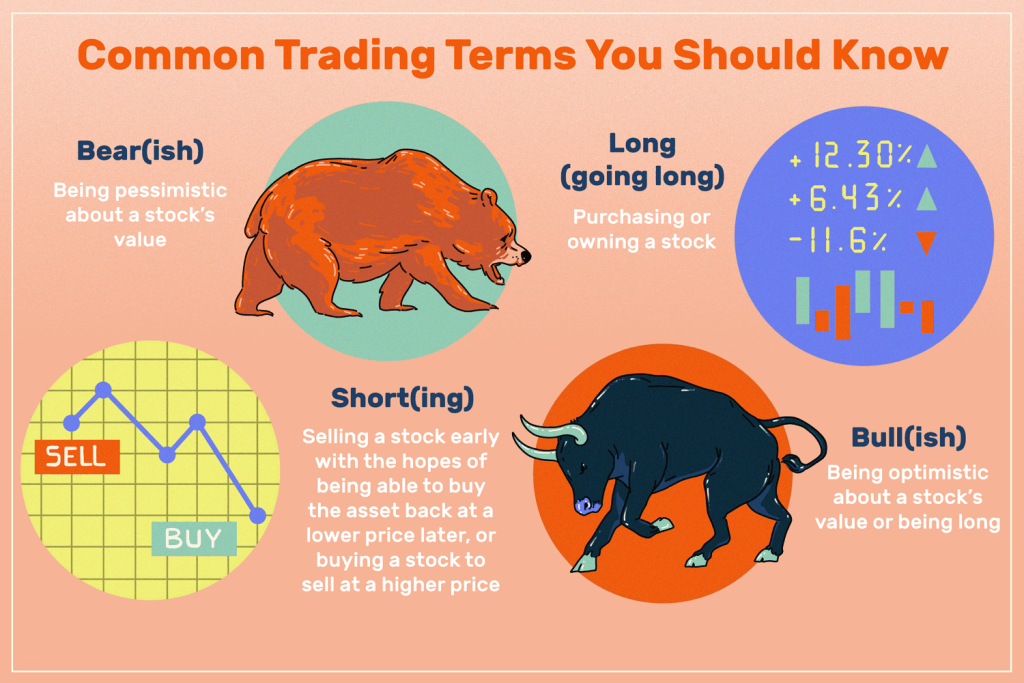
This article will cover the Bullish definition. Being A trader or an investor means you have to learn a lot of new slangs. A lot of new words and slangs only exist or have meaning in the financial markets. And what’s more, some of those slangs only exist in a specific financial market. For example, in the crypto industry, one of the most well-known slang is whales.
Whales are the crypto investors who have a significant amount of a certain token. For example, a Bitcoin whale is an investor who has more than 1,000 BTC tokens in his wallet. A whale can own more than 10% of a certain token. Whales are useful, as traders watch the movement of whales closely. They are useful in the sense that they can greatly influence the price of a certain token.
This article isn’t about the definition of whales though. Therefore this article won’t spend much time explaining that slang. Instead, this article will cover the Bullish definition. What does bullish mean in the financial markets? Continue reading this article, as it will explain the bullish definition. Therefore you’ll learn what bullish means in financial markets. Such as Forex, Crypto, New York stock market or any other financial markets.
What does Bullish Mean?
Bullish definition in the dictionary is assertive and self-confident behaviour. Which totally makes sense if you really think about it. Bullish definition in the financial markets is the same. But let’s not get ahead of ourselves and check what the bullish definition is in financial markets. So, without any further ado, let’s dive in.

What does Bullish mean in financial markets?
In the financial markets, the bullish definition is pretty close to the bullish definition in the dictionary. A bullish trend in crypto is a trend that’s moving upwards. In financial markets, the price moves in trends. Trends can be defined by the direction they’re moving in. Therefore, bullish and bearish words are used to define a financial trend. A bearish trend is the opposite of a bullish trend.
If someone says a certain token is in a bearish trend, it means the token’s price is only going to decrease in this trend. The bearish trend is the opposite of a bullish trend, the price moves in two directions. Therefore bullish and bearish are used to define the direction of the price of a certain token. Enough talking about bearish trends though, let’s get back to the bearish definition.
How should you trade in a bullish trend?
The bullish definition doesn’t mean anything if you don’t know how to trade in a bullish trend. There is a very important rule in the financial market that applies here too. It says, to only trade according to the direction of the market. But what does this really mean?
It means, that if it’s a bullish trend, you should only enter long or buy positions. If it’s a bearish trend, you should only enter short or sell positions. You should know that entering positions in opposition to the market direction is more profitable. It means you will gain more money from a sell position in a bullish trend. Therefore, trading in opposition to the current trend direction is more profitable.
Why?
This section of the article will explain why knowing the bullish definition helps you as a trader. Trading is a ‘zero sum’ game. This means traders will only gain, only as much as other traders lost. Therefore, if you profit from a trade, your profit comes from those who trade money trading. In a bullish trend, most traders will be trading and entering positions in accordance with the trend. So, in a bullish trend, most traders will be opening long positions.
Now, imagine you have entered a short position in a bullish trend. While most of the traders have entered long positions. And the trend actually reverses and the price decreases significantly. Now, the profit of all the traders who had entered short positions came from the pocket of those who had entered long positions. Remember, most traders trade in accordance with the market trend. Therefore, most traders will be losing money, and those who traded in opposition to the trend will gain significantly more.
Where does the word Bullish come from?
The word bullish comes from the way a bull attacks its prey. A bull first lowers its head, then throws its head up violently. Therefore its prey will be damaged significantly. As its body will be pierced by the bull’s strong horns.
The bullish definition in financial markets comes from the way bulls attack. In a bullish trend, the price drops a little at first. This is because the bulls want to enter at a lower price. Then, the price starts moving upwards and continues to move upwards unless the trend reverses.
Q&A
What does bullish behaviour mean?
The bullish definition is assertive and extremely confident in oneself behaviour. As in financial markets, bullish price behaviour means the market is moving upwards. A bullish trend is a trend in which the price is increasing and is going to continue increasing in the near future.
What’s the opposite of Bullish?
Bearish is the opposite of Bullish. Bearish means exactly the opposite of what bullish stands for. For example, a bearish trend is a trend in which the price is only decreasing. Therefore a bearish trend is exactly the opposite of a bullish trend.
Is bullish up or down?
A bullish trader or a bullish investor believes the price is going up. Therefore bullish means up. Then, a bullish trader is a trader that believes the price of a certain token is going to increase. A bearish trader, on the other hand, believes and acts as if the price is going to get lower and lower.

